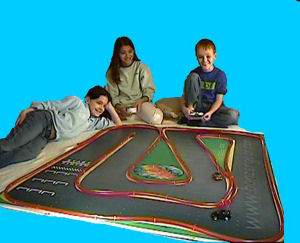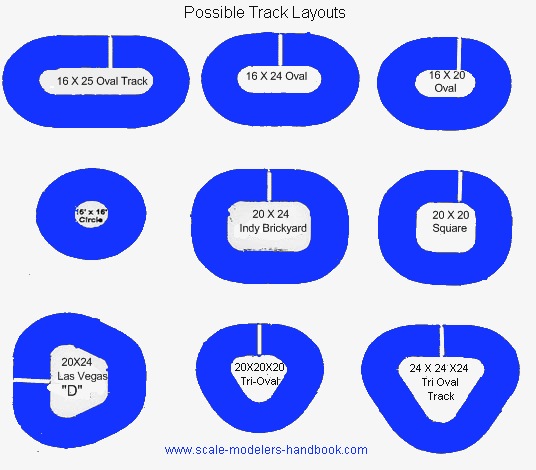|
DIY Race Track Makes
|
One of the biggest drawbacks to repeated practice is having to be limited to weekend nights and can cost as much as $5-$10 per hour depending upon amenities. "My friends and I got into mini-zs and we would have to travel far plus it costs $15 each day we race. It would be great to build our own track to practice on."
A DIY RC track lets you practice when you want, how you want and at no cost.
 The first thing you need to do is determine your budget and style. By style, I mean whether or not you’re simply just a casual racer looking for something simple – or you’re a pro racer looking for the best RC track out there. This is the most crucial decision you need to make because it will make all the difference in area requirements, costs, and environment.
The first thing you need to do is determine your budget and style. By style, I mean whether or not you’re simply just a casual racer looking for something simple – or you’re a pro racer looking for the best RC track out there. This is the most crucial decision you need to make because it will make all the difference in area requirements, costs, and environment.

First, survey your environment. Do you have a paved surface or at least hard-packed dirt, relatively flat that provides you with say an 8’ X 10’ open area?
Draw out a design you’d like to have, on graph paper because it will let you construct your drawing based on actual measurements, specific to your space.
Below, you will find layouts for nine different race tracks and most can be built in a similar sized area.
Materials List
- Graph Paper + Pencil
- Measuring Tape
- Table Saw (or hand saw)
- Carpet Squares
- Garden Hose / Plastic Piping / Wood
- Super Glue / Industrial strength glue
Suggestion: Use the Plain Graph Paper PDF Generator by Incompetech.com It allows you to set the line width, spacing and color and save the results as a printable .pdf file. Handy!
Set the spacing to 2 per inch and you can give each space the value of two square feet. If you are planning a race track of greater size use either 3 or 4 to the inch.
You want to use the square foot configuration as the most common track surface material comes in the 24”X24” dimension.
Shop online for your track surface material. For instance Getrung.com offers a line of rubber-like EVA foam interlocking tiles for RC race tracks. There’s really no set rule on how your own track should look—make wiggly turns here and there—have fun and be creative. Just make sure you leave enough room for your RC to turn around corners, etc. Depending on what type of RC vehicle you have, make sure you make the lanes big enough to fit your vehicle. If you were trying to race 1/8th scale vehicles, I would recommend 4 to 7 feet of space from wall to wall.
Keep in mind these track sizes while constructing:
- Standard - Standard size tracks have 20-inch lanes, usually built to suite micro RC vehicles (1/24th scale).
- Medium – Medium size tracks have 33-inch lanes, also for smaller standard RC vehicles. This type of track can fit into a 12 x 14 foot space if made into an oval shape.
- Wide – Wide tracks have 44-inch lanes, almost 4 feet, which is great for most type of RCs. This is probably your best bet if you have a variety of sizes in your RC collection.
In the design, draw in places you’d like to make jumps, bumps, tunnels – whatever fits your driving style.
Construct Your Own Le Mans
This is not rocket science, there isn’t any need to get stressed out. You are building your own practice area so if you end up with the wrong dimensions, work with what you’ve got.
If you found a paved or concrete surface you can use, great! This is going to be a “portable” track so you won’t be marking or damaging the roadway or parking area. The flatter the better.
Some quick housekeeping before you set-up, a good brooming of the area to remove stones or a dirt buildup will make racing practice a lot smoother. We’ll discuss jumps later.
The interlocking tiles make this project a snap, the fit together like a puzzle with giant pieces.
To keep your course simple and changeable, do not cut into individual lanes. Instead put together a rectangle or square big enough to contain your track.
While you are thinking of the layout, confirm the style of racing you want and alter the dimensions to suit the space you have available.
All of the race track configurations below are possible for any area, but try to maintain at least a 20-inch lane width for micros, 33-inch for regular RC vehicles and 44-inch roadways for larger RC racers.
< p>


Do-It-Yourself Resources
Take a look at how to make your own things and beat that Credit Crunch!
Quick-Finder




